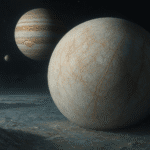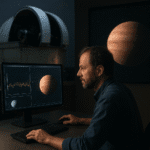The quest to uncover distant worlds beyond our Solar System has captivated astronomers and enthusiasts alike for decades. With each new discovery, we gain a deeper understanding of the Universe and the processes that govern planetary formation, evolution, and potential for hosting life. Leveraging cutting-edge technology, innovative analysis, and international collaboration, scientists have successfully identified thousands of exoplanets, ranging from scorching gas giants to rocky Earth-sized bodies. This article explores the primary methods of detection, the role of both ground-based and space-based instruments, and the promising future of exoplanet research.
Detection Techniques Unlocking Hidden Planets
Discovering an exoplanet is akin to spotting a firefly next to a stadium floodlight: the star’s glare typically overwhelms the faint planetary signal. Astronomers employ several ingenious methods to tease out these elusive objects. Each technique exploits a different aspect of the star–planet interaction, from subtle dips in stellar brightness to minute wobbles in stellar motion.
Transit Method
The transit method has become the workhorse of exoplanet discovery, responsible for the majority of known planets. When a planet passes—or transits—in front of its host star as seen from Earth, it blocks a fraction of the star’s light, creating a recurring dip in brightness. By monitoring these periodic dips, scientists can derive the planet’s size, orbital period, and, with additional data, even atmospheric composition.
- Precision photometry tracks changes in stellar luminosity.
- Multiple transits confirm orbital stability and period.
- Spectral analysis during transit reveals trace gases like water vapor and methane.
Radial Velocity Method
Also known as Doppler spectroscopy, the radial velocity method measures tiny shifts in a star’s spectral lines caused by the gravitational tug of an orbiting planet. As the planet orbits, it induces a slight back-and-forth motion in the star, causing alternating redshifts and blueshifts in its light. The amplitude of this wobble reveals the planet’s minimum mass and orbital eccentricity.
- High-resolution spectrographs detect velocity shifts down to a few meters per second.
- Combining radial velocity with transit data yields planet density.
- Ideal for identifying massive Jupiter-sized exoplanets in close orbits.
Direct Imaging and Microlensing
While the direct imaging method remains challenging due to the stark brightness contrast, advanced techniques like coronagraphy and adaptive optics have successfully captured images of a handful of exoplanets. These observations offer direct insight into atmospheric composition and temperature.
Gravitational microlensing, on the other hand, leverages the gravitational field of a foreground star to magnify the light of a background star. If the foreground star hosts a planet, it creates a brief, characteristic spike in the magnification curve, signaling the planet’s presence even at vast distances.
Ground-Based Observatories: Pioneering Discoveries
Ground-based facilities around the world have played a pivotal role in exoplanet research. From dedicated telescopes optimized for high-precision measurements to large multiplex surveys, these observatories complement space missions by enabling extended monitoring and follow-up studies.
HARPS and the Radial Velocity Revolution
The High Accuracy Radial velocity Planet Searcher (HARPS) instrument at the La Silla Observatory in Chile has set benchmarks in detecting radial velocity signals as small as 1 m/s. HARPS’ stability and sensitivity have led to the discovery of dozens of super-Earths and Neptune-mass planets, reshaping our understanding of planetary demographics.
Transit Surveys from the Ground
Projects like the Next-Generation Transit Survey (NGTS) and MEarth exploit arrays of small telescopes to continuously monitor thousands of stars. By focusing on red dwarfs, which are smaller and cooler than the Sun, these surveys enhance the transit signal of an Earth-sized planet, opening avenues to find potentially habitable worlds.
Space-Based Telescopes: Reaching Beyond Atmospheric Limits
Space telescopes have revolutionized exoplanet detection by escaping the distortions and light pollution inherent to Earth’s atmosphere. Free from atmospheric interference, they deliver unparalleled photometric and spectroscopic precision.
Kepler and K2 Missions
NASA’s Kepler mission ushered in a golden age of exoplanet discovery, monitoring over 150,000 stars and yielding more than 2,600 confirmed planets. Its extended K2 mission repurposed the spacecraft to explore different regions along the ecliptic plane, discovering unique planetary systems and refining detection methodologies.
TESS: Surveying the Brightest Stars
The Transiting Exoplanet Survey Satellite (TESS) focuses on the brightest and nearest stars, enabling follow-up observations with ground-based and space-based instruments. TESS’s all-sky survey strategy is projected to identify thousands of new exoplanets, including dozens of Earth-sized bodies in the habitable zone.
James Webb Space Telescope and Beyond
With its powerful infrared capabilities, the James Webb Space Telescope (JWST) promises transformative insights into exoplanet atmospheres. By capturing transmission and emission spectra, JWST can detect molecular fingerprints, assess cloud properties, and measure thermal profiles, bringing us closer to detecting possible biosignatures.
Emerging Technologies and Future Prospects
Exoplanet science continues to evolve rapidly, driven by technological innovation and theoretical breakthroughs. Upcoming missions and instruments aim to push the boundaries of sensitivity, resolution, and wavelength coverage.
PLATO and ARIEL Missions
- ESA’s PLATO (PLAnetary Transits and Oscillations of stars) will survey bright stars for Earth-sized planets in the habitable zone of Sun-like stars.
- ARIEL (Atmospheric Remote-sensing Infrared Exoplanet Large-survey) will characterize the atmospheric composition of hundreds of exoplanets, focusing on water, carbon compounds, and thermal structure.
Advances in Coronagraphy and Starshades
To directly image Earth-like planets around Sun-like stars, astronomers are developing advanced coronagraphs for space telescopes and external starshades—large, flower-shaped shields that block starlight before it enters the telescope. These technologies could reduce stellar glare by factors of a million, enabling the detection of faint planetary reflections.
Ground-Based Giants: ELT, TMT, and GMT
The next generation of extremely large telescopes, including the European Extremely Large Telescope (ELT), Thirty Meter Telescope (TMT), and Giant Magellan Telescope (GMT), will harness mirrors up to 39 meters in diameter. Equipped with state-of-the-art adaptive optics and high-dispersion spectrographs, these behemoths will resolve exoplanet atmospheres and surface features with unprecedented clarity.
As the pace of discovery accelerates, humanity stands on the cusp of answering profound questions: How diverse are planetary systems? What percentage of planets reside in the habitable zone? And ultimately, are we alone in the cosmos? Through persistent innovation and global collaboration, the next decade promises to reshape our understanding of the countless new worlds awaiting detection.










